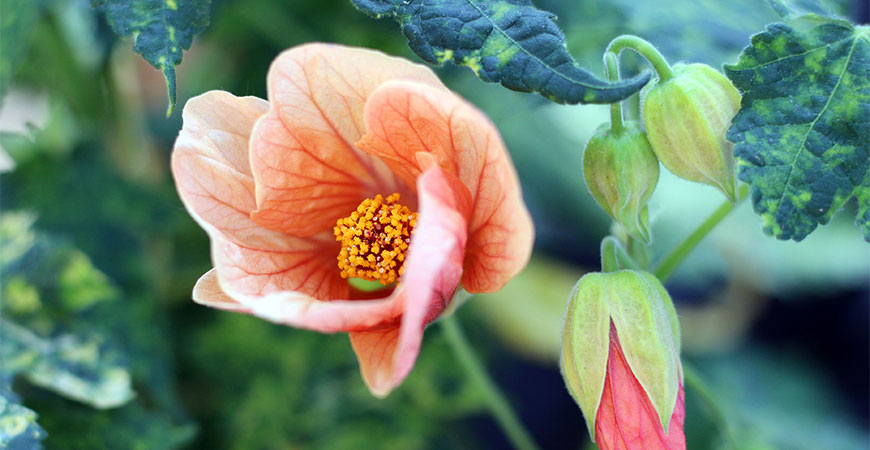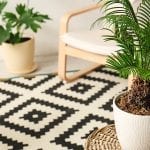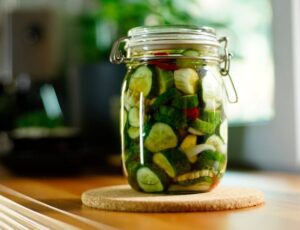
The Best Indoor Flowering Plants to Brighten Up Your Home
Indoor flowering plants bring a bright, cheerful note to a bookshelf, side table, kitchen counter, or any room in your home. If you’re looking for a beautiful bloomer to add a splash of color to your interior, see our suggestions below.
Flowering Maple

Flowering maple (Abutilon striatum) is a tropical plant that grows indoors to the size of a small shrub or miniature tree. The flowering maple is not related to the maple tree but gets its name from the plant’s foliage which resembles maple leaves.
When well cared for, this houseplant is a profuse bloomer. This indoor flowering plant thrives in indoor temperatures and tolerates outside temperatures as low as 50 degrees.
Flower: Hibiscus-shaped flowers in salmon, red, white, or yellow
Bloom time: From June to October
Light requirements: Place in areas of full sun to very light shade
Care: Flowering maple enjoys moist, well-draining soil. Water the plant well, but do not over-water. Water lightly in winter. If your flowering maple looks gangly, pinch back the branch tips in spring to keep it compact and bushy.
Chenille Plant

Chenille plant (Acalypha hispida) is sometimes known as the red-hot cattail or fox tail. The fuzzy chenille-like flowers can grow to 12 to 18-inches in length, cascading gracefully over the sides of the pot.
If your chenille plant begins to look scraggly, prune any faded tassels and trim the plant back a bit. You’ll have a healthier, more compact plant.
Flower: Red blooms that resemble small feather dusters, or caterpillars
Bloom time: Year-round with proper care
Light requirements: Bright, indirect light. A south-facing window is ideal.
Care: Chenille plants prefer well-drained, consistently moist soil. Some indoor specimens can grow to a height of 2 to 3 feet.
Like most tropical plants, the chenille plant thrives in a warm, humid environment. Wear gardening gloves when caring for this bloomer, as the plant’s sap can irritate your skin.
In addition, display your chenille plant up and away from children and pets, as the plant’s foliage is mildly toxic.
Kalanchoe
Kalanchoe (Kalanchoe blossfeldiana) is a hardy succulent that is popular for its shiny leaves and the wide variety of colors available. You may have run across this houseplant in the grocery store as it is often sold in the floral section.
Flower: Petite, four-petaled flowers in yellow, white, pink, magenta, orange, or red
Bloom time: long blooming period, from late winter to late spring.
Light requirements: Kalanchoes prefer bright, indirect light. Move them out of the direct sun, as the foliage is susceptible to burns.
Care: Water kalanchoe when the soil feels dry to about 1-inch below the surface. Frequently mist it to keep the leaves succulent. Use a well-draining potting soil or a potting soil blended for succulents.
After the blooming period, pinch back your kalanchoe to keep it healthy and compact.
Bromeliad
Bromeliad (Bromeliaceae) is a striking tropical plant usually seen in offices or public settings. And for a good reason. This forgiving plant is easy to care for and requires little moisture. The bromeliad is a member of the pineapple family.
Flower: Spiky, pointed blooms in bright orange, bright yellow, or pink
Bloom time: Most bromeliads flower in the winter months, with the blooms lasting for three months or longer.
Light requirements: Bright, indirect light
Care: Bromeliads are hardy and require only once a month watering. This indoor flowering plant also enjoys plenty of humidity.
To provide constant humidity for your bromeliad, set your plant on a shallow tray filled with gravel or pebbles and a small amount of water. Also, increase the light level to encourage blooming in a mature plant.
Begonias

Begonias (Begoniaceae) There are three types of begonias – tuberous, fibrous, and rhizomatous. Fibrous and rhizomatous begonias make great bloom houseplants, while the tuberous variety is harder to grow indoors due to the humidity and light requirements.
Flower: Delicate flowers in Red, Orange, Pink, White, and Yellow
Bloom time: Year-round with proper care
Light requirements: Bright, indirect light. For the best blooms, place your begonia near a sunny window.
Care: Begonias prefer well-drained, evenly moist soil. And they thrive when they are slightly pot-bound, so re-potting your begonia is rarely needed. Like the bromeliad, begonias enjoy humid air, so a water-filled pebble tray will help keep your begonia happy.
Furthermore, the tender begonia isn’t fond of the wind or drafts so display your plant away from open windows and doors.
Clivia

Clivia (Amaryllidaceae) is native to the woodlands of South Africa. This plant sports tall stocks of flowers and long pointed foliage. Unlike its cousin, the amaryllis, which sprouts from a bulb, this lovely bloomer is an evergreen that grows from roots.
Flower: Lightly perfumed, Orange, yellow, or red blooms; similar to hibiscus flowers
Bloom: Clivia flowers in February, March, or April, or after the plant has been exposed to 4 to 5 weeks of cool, dry conditions.
Light requirements: Bright, indirect light
Care: Clivia is a forgiving plant. It does not mind if you forget to water it occasionally. Like the begonia, clivia likes being pot-bound.
In addition, you will get the best bloom with a mature clivia that is snug in its container. Keep your indoor flowering clivia looking nice by clipping any leaves that have yellowed at the base.
Lipstick Plant

Lipstick plant (Aeschynanthus radicans) is closely related to the African violet. For the best bloom, fertilize the lipstick plant in spring and summer with an all-purpose houseplant fertilizer.
Flower: A vivid flower emerging from a tube-shaped bud, looking similar to a tiny tube of lipstick.
Colors: A combination of red (flower) and dark maroon (bud)
Bloom: Fall, and infrequently throughout the year
Light requirements: Bright, indirect light in the morning or evening, approximately 4 hours per day.
Care: Water lipstick plants well but do not soak the soil as this can lead to root rot. If your lipstick plant refuses to bloom, try moving it to a brighter location. Enhance the blooms of your lipstick plant by adding variegated ivy to the pot, creating a lush, mixed-plant container.
If you enjoy colorful plants you can grow inside, consider one of the indoor flowering plants above to add natural beauty to your interior.















